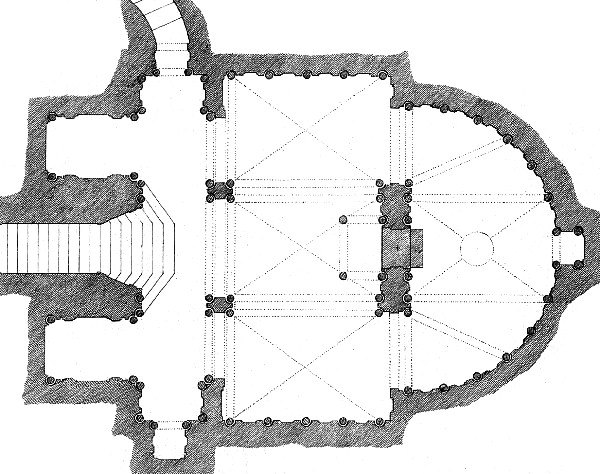Alessandro Algardi
sculptor and architect; b. 1602, at Bologna; d. 1654.
Algardi formed himself principally on the work of Bernini. After 1650 he built the Villa Belrespiro or Pamfili on the Mons Janiculus, Rome, with its gardens and their architectural decorations. He built the great altar of the Church of S. Niccolò Tolentino, and the façade of the Church of S. Ignazio, both in Rome. He was associated with Borromino in the decoration of S. Peter's. Algardi was one of the best sculptors of his time. He worked in ivory and silver, designed gems and medals, and was especially successful in modelling children. His most characteristic work is the great bas-relief representing "Attila's retreat from Rome" at S. Peters.
Louis Levau (Leveau)
architect ; b. 1612; d. October, 1670.
The son of Louis Levau, general inspector of the buildings at the château of Fontainebleau. About 1650 he built his first important work, the Hôtel Lambert de Thorigny on the Isle Saint Louis, Paris. For Nicolas Fouquet he built the chateau of Vaux-le-Vicomte, between 1653 and 1660. In 1655 he succeeded Christophe Gamart as architect of the church of S. Sulpice, Paris, and was himself superseded at that work by Daniel Gittard in 1670. In 1656 Levau succeeded Jacques Lemercier as architecte ordinaire du roi, and continued the works at the Louvre. He completed the northern side of the old quadrangle and rebuilt a large part of the southern side, making a new facade upon the river. This front was afterward rebuilt by Claude Perrault. Levau also designed a façade for the eastern front which was never executed. In 1664 he began to remodel the Tuileries. He rebuilt the central pavilion, removed the grand stairway, and replaced the circular cupola by a larger square one. He destroyed the pretty roofs of the side wings with their dormer windows (lucarnes), and built a story in the Corinthian order with an attic in their place. (See De l'Orme, Philibert.) He also rebuilt the upper part of the pavilion designed by Jean Bullant and completed the Tuileries by building the Pavilion Marsan on the north. In 1662 Levau began the palace of the Collège des Quatre Nations, called also Palais Mazarin (now Palais de l'Institut), opposite the centre of the southern side of the Louvre quadrangle on the other side of the river. In 1664 he commenced the church of S. Louis-en-1'Ile, Paris, which was continued by Gabriel le Duc. To the old château of Louis XIII, at Versailles, he added a front court with two pavilions and an orangerie.
Martino Lunghi (the younger)
architect; d. 1657.
A son of Onorio Lunghi. He built about 1650 the church of SS. Vincenzo ed Anastasio near the fountain of Trevi for the Cardinal Mazarin, and the little church of S. Antonio de' Portoghesi, about 1652. Less important are the façades of S. Adriano and S. Maria dell' Orto and the altar of S. Carlo al Corso. All are in Rome.
Johann Gregor Meinhardt
architect and engineer; d. 1687.
Meinhardt was a Hollander who was made architect of the Electoral Court of Berlin, in 1650. He remodelled the city of Berlin and laid out the streets called Unter den Linden and the Dorotheenstadt. He began the Schloss Oranienburg (New Berlin) in 1651.
| |

Plan of the Confession, by Piero da Cortona, placed under the choir of the Church of S. Silvestro and S. Martino, and above and adjacent the Oratory of St. Sylvester.
Seroux
| |
|